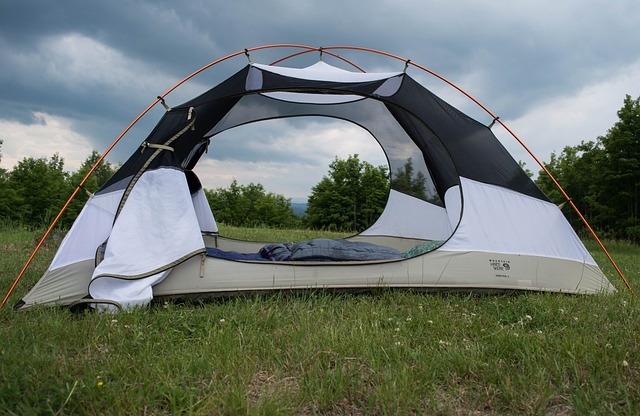If you’re wondering what size tent footprint you need, you’ve come to the right place. Choosing the right size tent footprint might not be the most thrilling topic, but trust me, it’s an important one. Whether you’re an avid camper, a hiker, or just enjoy the occasional outdoor adventure, a tent footprint can make a significant difference in protecting your tent and enhancing your overall camping experience.
Throughout this article, I’ll guide you through the ins and outs of tent footprints, discussing their purpose, benefits, and factors to consider when selecting the perfect fit. So, let’s dive in and make sure you’re equipped with the knowledge you need to find the ideal tent footprint for your next adventure.
Understanding Tent Footprints
Before I delve into the nitty-gritty of choosing the right size tent footprint, let’s take a moment to understand what exactly a tent footprint is and why it matters.
A tent footprint, also known as a groundsheet or ground cloth, is a protective layer that you place beneath your tent. It serves as a barrier between the tent floor and the ground, providing several benefits that can greatly enhance your camping experience.
- Protection: One of the primary purposes of a tent footprint is to protect the bottom of your tent from wear and tear. The ground can be rough, rocky, or have sharp objects that could potentially puncture or damage your tent floor. By using a footprint, you create an extra layer of defense, preserving the longevity of your tent.
- Insulation: A tent footprint can also provide added insulation for your tent. When the ground is cold, the footprint acts as a buffer, preventing the cold from seeping into your tent. Similarly, during hot weather, it can help keep your tent cooler by reducing heat transfer from the ground.
- Waterproofing: Many tent footprints are made from waterproof materials or have a waterproof coating. This feature is especially useful in wet or rainy conditions, as it prevents moisture from seeping through the tent floor. It adds an extra layer of protection against dampness, keeping you and your gear dry.
Using a tent footprint is like giving your tent an extra layer of armor, ensuring its durability and comfort in various camping environments. It’s a small investment that can go a long way in extending the lifespan of your tent and enhancing your overall camping experience.
Next up, I’ll discuss the important factors to consider when choosing a tent footprint.
Factors to Consider When Choosing a Tent Footprint
Now that you understand the importance of a tent footprint, let’s explore the key factors to consider when selecting the right one for your needs. These factors will help ensure that you choose a footprint that perfectly matches your tent and meets your camping requirements.
- Tent Size and Shape: The size and shape of your tent play a crucial role in determining the size of the footprint you need. It’s essential to choose a footprint that matches the dimensions of your tent’s floor. Most tent footprints are designed to correspond with specific tent models or sizes, so be sure to check the manufacturer’s recommendations or consult the tent’s documentation.
- Material: Tent footprints are typically made from various materials such as nylon or polyethylene. Each material has its advantages and disadvantages. Nylon footprints are lightweight, durable, and packable, making them ideal for backpackers and hikers. On the other hand, polyethylene footprints are generally more affordable and provide excellent waterproofing. Consider the specific needs of your camping trips and choose a material that suits your preferences.
- Weight and Packability: If you’re planning on backpacking or hiking with your tent, the weight and packability of the footprint become significant factors. Look for lightweight and compact options that won’t add unnecessary bulk to your backpack. Additionally, consider how easy it is to pack and store the footprint when not in use.
- Durability: Durability is key when it comes to choosing a tent footprint. It should be able to withstand rough terrains, varying weather conditions, and repeated use. Look for footprints that are made from robust materials, have reinforced corners or seams, and are resistant to abrasion. Investing in a durable footprint ensures that it will last for multiple camping trips.
- Price Range: Tent footprints come in a range of prices to accommodate different budgets. While it’s tempting to opt for the most affordable option, keep in mind that quality and durability often come with a higher price tag. Consider your budget and strike a balance between cost and the features you need. It’s better to invest in a reliable and long-lasting footprint that will provide adequate protection for your tent.
In the next section, I’ll discuss how to accurately measure the size of your tent to ensure a proper fit for the footprint. So, let’s keep going.
How to Measure the Tent Footprint Size
To ensure a proper fit for your tent footprint, it’s important to measure the size of your tent accurately. Here’s a step-by-step guide to help you get the measurements right.
- Lay out your tent: Start by setting up your tent on a flat and level surface. Make sure the tent is fully extended and taut.
- Measure the tent floor: Using a tape measure or ruler, measure the length and width of the tent floor. Start from one corner and measure all the way to the opposite corner. Take note of the measurements in feet or inches.
- Consider the shape: If your tent has an irregular shape, such as a hexagon or a dome, take additional measurements for any protruding sections or unique dimensions. This will help you choose a footprint that accommodates the entire tent area.
- Round up: When in doubt, it’s always better to round up the measurements to the nearest foot or inch. This ensures that the footprint will adequately cover the entire tent floor and provide the necessary protection.
Remember, it’s crucial to measure your tent accurately to ensure a proper fit for the footprint. If you have any doubts or concerns, don’t hesitate to refer to the tent manufacturer’s guidelines or contact their customer support for assistance.
In the next section, I’ll delve into determining the ideal size for your tent footprint based on different options and considerations.
Determining the Ideal Size for Your Tent Footprint
Now that you have the measurements of your tent, it’s time to determine the ideal size for your tent footprint. There are a few options and considerations to keep in mind.
- Matched Size: The simplest and most common option is to choose a tent footprint that is specifically designed to match the size of your tent. Many tent manufacturers offer footprints that are tailored to fit their tent models perfectly. This ensures that the footprint covers the entire tent floor, providing maximum protection. Check the tent’s documentation or the manufacturer’s website for recommended footprints.
- Slightly Smaller: Alternatively, you can opt for a footprint that is slightly smaller than the dimensions of your tent. This approach can save on weight and pack size. However, it’s important to ensure that the smaller footprint still adequately covers the sleeping area and high-traffic sections of your tent. Be mindful of potential exposure to the elements if you choose this option.
- Custom-Made: For those with unique tent shapes or specific requirements, custom-made footprints are an option worth considering. Some outdoor gear companies offer customization services where you can provide your tent’s measurements, and they will create a footprint tailored to your tent’s exact specifications. This ensures a perfect fit and maximum coverage.
When determining the ideal size for your tent footprint, consider factors such as your camping style, the terrain you’ll encounter, and the weather conditions you expect to face. If you often camp in rough terrain or encounter heavy rainfall, opting for a footprint that covers the entire tent floor is recommended for optimal protection.
It’s always better to have a slightly larger footprint than a smaller one. A larger footprint provides more coverage and protection against moisture, rocks, and other potential hazards. However, if weight and packability are crucial concerns for your camping adventures, a slightly smaller footprint may be a viable option.
Next, I’ll share some valuable tips for using and maintaining your tent footprint.
Tips for Using and Maintaining Your Tent Footprint
Using and properly maintaining your tent footprint is essential for maximizing its effectiveness and longevity. Here are some valuable tips to help you make the most out of your tent footprint.
1. Proper Installation
- Before setting up your tent, clear the area of any sharp objects or debris that could potentially damage the footprint or tent floor.
- Lay the footprint down on the ground, ensuring it is positioned flat and taut.
- Place your tent directly on top of the footprint, aligning the corners and ensuring a secure fit.
- Use stakes or guylines to secure the tent and footprint in place, preventing shifting or movement during windy conditions.
2. Cleaning and Storage
- After each camping trip, clean the footprint thoroughly before storing it. Use a gentle soap or cleaning solution and a soft brush or cloth to remove dirt, debris, and any stains.
- Rinse the footprint with clean water to ensure all cleaning agents are removed.
- Allow the footprint to air dry completely before folding or packing it away.
- Store the footprint in a cool, dry place, away from direct sunlight and moisture. Avoid storing it in a compressed or folded position for extended periods, as this can lead to creases or damage.
3. Regular Inspection
- Before each camping trip, inspect the tent footprint for any signs of wear and tear, such as holes, fraying, or weak spots. Pay close attention to the corners and edges, as they are more prone to damage.
- If you notice any damage, consider repairing it using a reliable and waterproof tent repair kit or consult the manufacturer for guidance.
- Regularly inspecting your tent footprint helps catch potential issues early on, ensuring that it continues to provide adequate protection.
4. Layering and Tarp Usage:
- If additional protection is desired or the weather conditions are particularly challenging, you can layer your tent footprint with a tarp. Place the tarp on the ground, followed by the footprint, and then set up your tent on top. This layered approach can provide extra insulation and waterproofing.
- While a tarp can serve as a makeshift footprint, it’s important to note that it might not fit your tent’s dimensions perfectly. It’s generally recommended to use a dedicated tent footprint for the best fit and protection.
Now, let’s address some frequently asked questions about tent footprints in the next section.
Frequently Asked Questions about Tent Footprints
Do I really need a tent footprint?
Absolutely! While a tent footprint is not a mandatory accessory, it provides valuable benefits. It protects your tent floor from abrasion, adds insulation, and enhances waterproofing. It’s an investment that can extend the lifespan of your tent and improve your camping experience.
Can I use a tarp as a tent footprint?
Using a tarp as a tent footprint is possible, especially in a pinch or for temporary solutions. However, keep in mind that a tarp might not fit your tent’s dimensions perfectly, and it may not provide the same level of durability or protection as a dedicated tent footprint. It’s generally recommended to use a proper footprint for the best fit and performance.
Can I cut a larger footprint to fit my tent?
While it may be tempting to trim a larger footprint to fit your tent, it’s generally not recommended. Altering the size of a footprint can compromise its integrity and may lead to fraying or weakened areas. It’s best to choose a footprint that matches your tent’s size or opt for a slightly smaller one if weight and packability are a concern.
Can I use a footprint with a freestanding tent?
Yes, you can use a footprint with a freestanding tent. The footprint will provide the same benefits of protection, insulation, and waterproofing, regardless of the type of tent you have. Just make sure to properly align and secure the footprint under your tent to maximize its effectiveness.
Do all tent manufacturers offer matching footprints for their tents?
Not all tent manufacturers offer matching footprints for their tents, but many do. It’s worth checking the manufacturer’s website or contacting their customer support to inquire about available footprints for your specific tent model. If a matching footprint is not available, you can consider the slightly smaller or custom-made options we discussed earlier.
Remember, these are common questions about tent footprints, but feel free to reach out if you have any other specific concerns or queries. Now, let’s wrap up the article and conclude this exploration of tent footprints.
Conclusion
Congratulations on completing this comprehensive guide on “What Size Tent Footprint Do I Need?” You’re now equipped with the knowledge to make an informed decision when selecting a tent footprint for your camping adventures.
I explored the importance of tent footprints in protecting your tent, enhancing insulation, and providing added waterproofing. By choosing the right size and material, and considering factors like weight, durability, and price range, you can ensure optimal coverage and protection.
Remember to measure your tent accurately and follow proper installation techniques for the best fit and performance. Regular maintenance and inspections will help prolong the lifespan of your tent footprint.
If you have any lingering questions, please don’t hesitate to reach out. Now, get out there and enjoy your camping trips with confidence, knowing that your tent and its footprint are ready for any adventure.
Happy camping and may your outdoor experiences be filled with unforgettable moments!







